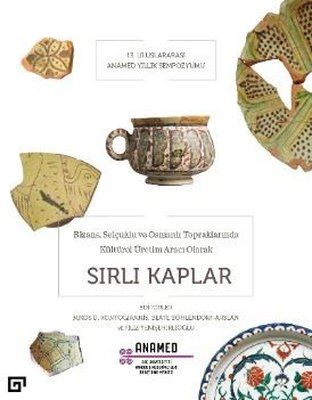
Bitlis Province District During the Formation of the Republic 1919 - 1950
(0) Comment - 0 Point
Category
Author
Stock
100 Piece
Stock code
PX0000016600
stock status
in stock
Publishers
Price
16,29 USD + VAT
*starting from 2,44 USD!
%20 discount
16,29 USD
13,04 USD
Glazed Wares as a Tool of Cultural Production in Byzantine, Seljuk and Ottoman Lands Book Description Glazed Wares as a Tool of Cultural Production in Byzantine, Seljuk and Ottoman Lands is the result of the 13th International ANAMED Annual Symposium and was born from the desire to investigate the mentality and identity of the people who made and used glazed pots. Their iconography and decorative styles go beyond the notion of “decorative motifs” and speak a language that needs to be deciphered. As in modern times, people were probably only able to recognize certain patterns, but decorations were still a gateway to the aesthetic senses of both creators and users; its influence was shared and transmitted through the trade of decorated ceramics. At the same time, as a representative of tableware, glazed ceramics have always carried an original expression of fashion, taste and social status. One's wealth and standing in society could be demonstrated with an extraordinary tableware or special crockery. Therefore, having a special dinner set has always attracted people's attention. Similar needs could also be met with imported (and thus “exotic”) ceramics, raising questions of the relationship, influence and interaction between imported and locally made glazed vessels. The manufacturing and firing techniques that achieve these visual results have always involved experimentation with dough recipes, imports of new material. and its use was the result of a conscious process involving the adoption and change of glazing techniques. The treatment of the ceramic surface involved a variety of options when it came to glazing, primer preparation and application methods. Fixity and/or change indicate the expansion of influence of a ceramic workshop and socio-ethnic continuity across geographical or temporal boundaries. Beginning with these questions, this publication aims to reveal the broad potential of Medieval and Early Modern ceramics for the study of complex socioeconomic patterns embedded in Eastern Mediterranean societies. We hope. We believe that tracing the incentives and motivations behind changes in ceramic decoration and technology can open up new possibilities and offer new tools for understanding historical realities. (From the Promotional Bulletin)
| Publisher | : | Koç University Publications |
| Number of pages | : | 450 |
| Publication Year | : | 2021 |
| ISBN | : | 9786057685957 |
| The heart | : | Turkish |
Be the first to review this product!
Kürtler için yapılmış güzel şeylerden bir tanesi
M... A... | 16/04/2025
siparişler hızlıca ulaşıyor, kategori çok. beğendim.
A... U... | 05/04/2025
Sizlerden gayet memnunum emeğinize sağlık
M... A... | 12/03/2025
Harikaydı
Serdar KÖMÜRCÜ | 22/01/2025
Gayet pratik ve hoş
Muzaffer Bora | 12/01/2025
Hızlı teslimat sağlandı .çok iyi bir şekilde bantlanmış teşekkürler. Gayet memnunum. Xwedê we bihêle .
A... Y... | 11/01/2025
&ddjmsd
RODEM ÇAÇAN | 06/01/2025
Sizi seviyorum Pırtukakurdi
Birsen KORKMAZ | 11/12/2024
Berbat
Sema Koç Soğancı | 29/11/2024
İsim yazılı kupa istedim kupada isim yok
F... D... | 09/11/2024


